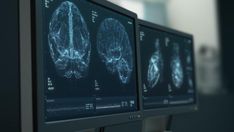Gastroenterology Coding Services: The Digital Revolution in Clinics and Outpatient Surgery Centers
Coding Services
Coding Services. In the dynamic landscape of specialized medicine, few disciplines face coding challenges as complex and multifaceted as gastroenterology . This essential branch of medicine, which encompasses everything from the delicate balance of the digestive system to the most advanced endoscopic procedures, requires extraordinary technical precision not only in medical treatment but also in translating each clinical act into accurate billing codes.
Modern gastroenterology extends from the esophagus to the rectum, encompassing the liver, pancreas, gallbladder, and the entire intricate digestive system. This anatomical and procedural complexity translates directly into unique coding challenges that can determine the financial success or failure of clinics and ambulatory surgery centers (ASCs).
The Gastroenterology Ecosystem: More Than Procedures
The Evolution of the Specialty
Gastroenterology has undergone a revolutionary transformation in recent decades. What was once limited to basic clinical diagnoses now encompasses:
- Advanced endoscopy with complex therapeutic capabilities
- Precision medicine for inflammatory bowel diseases
- Highly complex minimally invasive procedures
- Personalized biological therapies
- Endoscopic submucosal resection techniques
This evolution has created an exponentially more complex coding landscape, where every procedural nuance can mean the difference between optimal reimbursement and significant financial losses.

The Economic Impact of Precision
The financial implications of gastroenterology coding are monumental. A single error in coding a complex endoscopic procedure can result in:
- Reimbursement losses of thousands of dollars per case
- Regulatory audits with legal consequences
- Cascading denials affecting cash flow
- Reputational damage with insurance companies
- Compliance committed to federal regulations
Critical Challenges in Gastroenterology Coding
1. Modern Endoscopic Complexity
Contemporary endoscopic procedures represent the epicenter of complexity in GI coding:
Advanced Upper Endoscopy:
- ERCP (Endoscopic Retrograde Cholangiopancreatography) with multiple interventions
- Esophageal dilations with various techniques
- Biliary and esophageal stenting
- Endoscopic mucosal resection (EMR)
- Endoscopic submucosal dissection (ESD)
- Multiple polypectomies with differentiated techniques
- En bloc resections of large lesions
- Treatment of bleeding with multiple modalities
- Dilation of colonic strictures
- Placement of hemostatic clips
2. The Enigma of Multiple Interventions
A single endoscopic session may involve dozens of separate procedures , each with its own coding rules:
Typical Colonoscopy Scenario:
- Complete inspection of the colon
- Detection of multiple polyps
- Cecal snare polypectomy
- Sigmoid forceps polypectomy
- Biopsy of normal mucosa in rectum
- Application of hemostatic clips
- Tattooing of future surgery site
Coding Challenges:
- Correct application of modifiers -51 and -59
- Determining “packaged” vs. separable procedures
- Independent medical justification documentation
- Compliance with NCCI editions

3. The Medical Device Revolution
Modern gastroenterological devices have transformed procedures, creating new coding categories:
Advanced Endoscopic Devices:
- Self-expanding metal stents
- Endoscopic resection systems
- Drill closure devices
- Radiofrequency ablation systems
- Third spacelogy platforms
Coding Implications:
- Device-specific HCPCS codes
- Differentiation between temporary and permanent devices
- Technical specifications documentation
- Justification for device selection
Differentiating Between Clinics and ASCs: Parallel Worlds of Coding
The Universe of Gastroenterology Clinics
Gastroenterology clinics operate in a fundamentally different coding ecosystem:
Complex Outpatient Services:
- Highly complex queries with multiple systems reviewed
- Office-based diagnostic procedures
- Management of chronic diseases such as IBD
- Post-procedure follow-up with specialized evaluations
Unique Clinic Challenges:
- E/M (Evaluation & Management) codes specific to GI
- Integration of multiple diagnostic tests
- Documentation of complex medical decisions
- Coding of emerging biological therapies
- Management of gastrointestinal comorbidities
The Specialized World of ASCs
Ambulatory Surgery Centers face unique and specialized coding challenges:
Distinctive Features:
- Installation vs. professional billing
- Integrated anesthesia codes
- Management of expensive implants and devices
- Specific recovery protocols
- Management of immediate complications
Specific Complexities of ASCs:
- Specific place of service modifiers
- Supply and material codes
- Surgical time protocols
- Management of aborted or incomplete cases
- Documentation of justification for outpatient procedures
Technological Innovations and Their Impact on Coding
Artificial Intelligence in Gastroenterology
AI applied to GI procedures is creating new coding categories:
AI-Assisted Detection:
- AI-powered polyp detection systems
- Automatic analysis of endoscopic images
- Automatic injury classification
- Real-time histology prediction
Implications for Coding:
- New codes for AI technologies
- Documentation of systems used
- Differentiation of diagnostic accuracy
- Cost-benefit justification
Emerging Endoscopic Robotics
Endoscopic robotic systems are revolutionizing procedures:
Robotic Platforms:
- Robotic colonoscopy systems
- Robotic upper endoscopy platforms
- Robotics for biliary procedures
Coding Challenges:
- Specific codes for robotic procedures
- Differentiation of traditional techniques
- Documentation of clinical benefits
- Justification of additional costs
Advanced Coding Optimization Strategies
Predictive Analysis and Coding
The use of predictive analytics is transforming GI coding:
Predictive Applications:
- Identifying Denial Patterns
- Audit prediction by procedure
- Data-driven modifier optimization
- Reimbursement Trend Analysis
Electronic Systems Integration
Technological integration is improving coding accuracy:
Integrated Systems:
- EMR with automatic coding
- Specialized documentation interfaces
- Real-time validation systems
- Performance analysis platforms
Regulatory Compliance and Future Trends
The Evolving Regulatory Landscape
Regulations in gastroenterology are constantly evolving:
Key Regulatory Developments:
- Annual CPT Updates
- Changes in CMS policies
- New quality regulations
- Value-based payment programs
Precision Medicine and Coding
Personalized medicine in GI is creating new challenges:
Emerging Areas:
- Gene therapies for IBD
- Specific biomarkers
- Microbiome medicine
- Regenerative cell therapies
Case Studies: Coding in Real-World Practice
Complex Case 1: Multiple Therapeutic ERCP
Clinical Scenario: 65-year-old patient with complex biliary stricture requiring:
- Initial diagnostic ERCP
- Biliary sphincterotomy
- Dilation of multiple strictures
- Placement of metallic stent
- Extraction of residual stones
Coding Challenges:
- Multiple CPT codes for each component
- Correct application of modifiers
- Independent medical justification
- Complexity documentation
Complex Case 2: Colonoscopy with Advanced Resection
Clinical Scenario: Patient with familial adenomatous polyposis requiring:
- Complete colonoscopy
- EMR of a 4 cm lesion in the cecum
- Multiple polypectomies (15 polyps)
- Tattoo for surgical follow-up
- Application of hemostatic clips
Coding Challenges:
- Differentiation between EMR and polypectomy
- Separate codes for each technique
- Documentation of size and location
- Justification of multiple procedures
Success Metrics and Critical KPIs
Financial Performance Indicators
Key metrics for gastroenterology include:
Financial KPIs:
- Reimbursement rate per RVU
- Average collection time
- Percentage of denials
- Income per procedure
- Contribution margin per case
Operational KPIs:
- Coding time per case
- Initial coding accuracy
- Successful audit rate
- Gastroenterologist satisfaction
Benchmarking Competitivo
Comparative analysis is essential for optimization:
Benchmarking Areas:
- Refunds by type of procedure
- Coding efficiency
- Accuracy vs. speed
- Regulatory compliance
Selecting Coding Service Providers
Critical Evaluation Criteria
Selecting the right supplier requires thorough evaluation:
Specialized Experience:
- Certifications in gastroenterology
- Proven track record with ASCs
- Knowledge of emerging technologies
- Experience with complex audits
Technological Capabilities:
- Advanced coding platforms
- Integration with existing EMRs
- Real-time reports
- Predictive analytics
Support and Communication:
- 24/7 availability for urgent inquiries
- Continuing education for clinical staff
- Support during audits
- Optimization consulting
The Future of Gastroenterology Coding
Transformative Trends
The future of GI coding will be marked by:
Technological Innovations:
- Generative AI for documentation
- Augmented reality in procedures
- Blockchain for code verification
- Medical IoT for continuous monitoring
Evolution of Payment Models:
- Payment based on results
- Procedure bundles
- Risk-sharing contracts
- Integrated quality incentives
Preparing for the Future
Successful organizations are:
Investing in Technology:
- Predictive coding systems
- Advanced analytics platforms
- Smart documentation tools
Developing Talent:
- Specialized certification programs
- Continuing education in emerging technologies
- Academic collaborations
Conclusion: Strategic Investment in Coding Excellence
In today’s gastroenterology landscape, where every procedure represents a complex intersection of clinical innovation and financial accuracy , specialized coding services are not simply administrative support; they represent a critical strategic component for sustainable success.
The inherent complexity of modern gastroenterological procedures, combined with an ever-evolving regulatory environment and increasing pressure for economic efficiency, makes expert coding not only advisable, but absolutely indispensable .
For gastroenterology practices , accurate coding means the difference between successful financial management of complex IBD patients, sophisticated diagnostic procedures, and costly biologic therapies, versus constantly struggling with denials, audits, and unpredictable cash flow.
For gastroenterology ASCs , coding excellence represents the difference between profitable operations that can reinvest in cutting-edge technology and marginal survival in a competitive market.

The reality is incontrovertible: in a world where gastroenterological medicine is advancing at an exponential rate , where each technological innovation creates new coding paradigms, and where federal regulations become progressively stricter, investing in specialized coding services is not an option, it is a fundamental strategic necessity .
The future belongs to those organizations that recognize that clinical excellence and coding accuracy are not separate concepts, but rather integrated components of a holistic success strategy. In 21st-century gastroenterology, the critical question is not whether you can afford to invest in specialized coding, but rather, can you afford the cost of not doing so?
Excellence in gastroenterology coding isn’t an operational expense: it’s the investment that ensures your clinical innovation translates into financial sustainability and long-term success.



